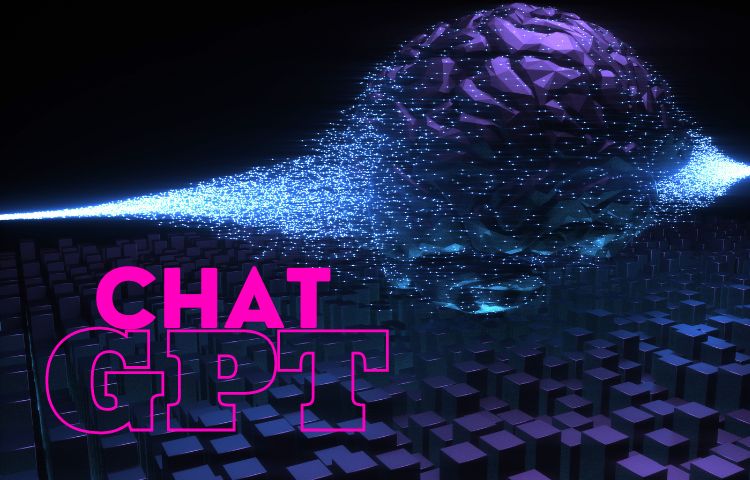

Prefer to listen instead? Here’s the podcast version of this article.
Assuming you aren’t isolated from all media and the internet, you have heard of—or even tried—ChatGPT. Developed by OpenAI, ChatGPT has dominated conversations for one simple reason: it has shown users of all ages and from all different backgrounds, industries, and professions the capability, power, and potential of generative pre-trained transformer (GPT) models. It’s hard to deny–ChatGPT is impressive.
GPT models from OpenAI have been available since 2018. ChatGPT, a chatbot, is built on the third iteration of this model known as GPT-3 (check out our article from 2021). And the next iteration, GPT-4, is expected sometime this year. So why is there such a clamor for it now? It’s simple. OpenAI made the technology easily accessible and free (for now) to everyone via the ChatGPT application for research purposes (it’s still a work in progress). As a result, it has everyone’s attention and shows the world how sophisticated and capable the language model is. Not only that, people are using it. In the first five days alone, ChatGPT garnered 1 million users, according to OpenAI. As of late January 2023, experts estimate that the tool averages 10 million daily users.
Pretty amazing stats, for sure. However, the same GPT-3 technology has been fueling SaaS products for the past few years, including CopyAI, JasperAI, MessageBird, Sapling, among others. There are two key differences: all these products are fee-based, and each serves specific use cases such as content generation or customer communications. ChatGPT, on the other hand, is leaving it to the user to determine their use case and, in turn, for OpenAI to glean some very valuable data. Need some HTML code? Tell chat GPT to write it. Need machine learning explained to you in layperson’s terms. No problem. Want ChatGPT to write a speech in the style of Steve Jobs? Yup. That too!
All these are real use cases for the casual user, but when it comes down to it, the value of GPT technology is immense, as it can transform how companies operate and do business. From saving time, reducing costs, increasing productivity, improving efficiency, or driving revenue, GPT technology has opened businesses’ eyes to the possibilities. For those in technology, it is less about the uses that splash media headlines and more about thinking of GPT technology as a solution to a business problem.
Let’s let ChatGPT explain ChatGPT:
ChatGPT is a generative AI model. It uses a technique called unsupervised learning, which allows it to generate new text based on the patterns it has learned from the data it was trained on. More specifically, ChatGPT is a type of transformer-based language model that uses a technique called autoregression, where it predicts the next word in a sequence based on the previous words. Because of this capability, it can generate text that is similar to the text it was trained on, which allows it to participate in text-based conversations with humans.
It’s critical to hone in on the type of AI, which is generative AI. Generative AI creates new content based on a set of learned patterns and relationships. ChatGPT is specifically text-based, but the area of generative AI can create new images, music, videos, or any other content type as long as it can pull from a set of examples or patterns.
Analogies are always helpful for comprehension. Let’s turn to ChatGPT to produce one: Explain how generative AI works using an analogy.
Generative AI is like a chef that can create new dishes based on the recipes it has learned. A chef can take a recipe for a cake, for example, and then use that recipe to make a new cake with a different flavor or decoration. Similarly, a generative AI model can take a dataset of text, like a book, and use the patterns it has learned from that text to create new text that is similar to the text in the book.
For all the excitement and success that ChatGPT is enjoying, it’s important for users and potential businesses to understand that the technology is not perfect. While technology can do specific work that humans do (e.g., writing), it is not without its limitations or caveats, including:
Humans can’t be excluded from the equation. Humans serve as an essential part of the process. They build the model, train it, ask the right questions, confirm output integrity, and work to improve the tool.
The possibilities for implementing a generative AI tool in your business are challenging to enumerate without context. As a starting point, it’s helpful to consider the needs and repetitive tasks that occur as part of your operations and across functions. Doing so will enable companies to start with applications that produce better ROI. However, the idea starters below could help illuminate the potential for your business.
Please contact Quantilus if you are interested in implementing OpenAI’s ChatGPT technology or other generative AI tools in your business or product. It is often difficult to pinpoint the use case or the ‘how’, but our team is happy to discuss your ideas or needs and provide pathways for implementation.
WEBINAR